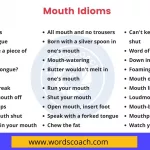Difference between Speech and Writing
Speech and writing are two primary forms of communication, each with its own characteristics and conventions.
What Is Speech?
Speech is the act of expressing thoughts, ideas, and emotions through spoken language. It involves the production of sounds using the vocal apparatus, which includes the lungs, vocal cords, mouth, and tongue.
What Is Writing?
Writing is a method of human communication that involves the representation of language through a system of symbols, usually known as letters or characters. It is a visual and permanent form of communication that allows for the recording and dissemination of information across time and space.
Difference between Speech and Writing
| Speech | Writing | |
| Medium and Mode of Delivery | Oral, transient, immediate. Delivered in real-time, with intonation, pauses, and body language adding meaning. | Written, permanent, can be edited. Delivered through text, allowing for planning and revision. |
| Spontaneity and Planning | Often spontaneous and informal. Allows for on-the-fly corrections, repetitions, and fillers (e.g., “um,” “uh”). | Typically planned and structured. Offers opportunities for editing and refining before the final version is presented. |
| Audience Interaction | Interactive and dynamic. Immediate feedback and engagement from the audience (e.g., through questions, applause, or non-verbal cues). | Generally one-way. Feedback is delayed and often less direct (e.g., through comments, reviews, or responses). |
| Language and Style | Informal and conversational. Uses contractions, slang, and idiomatic expressions more freely. Often includes non-standard grammar and incomplete sentences. | More formal and standardized. Adheres to grammatical rules and employs a more extensive vocabulary. Sentences are typically complete and well-structured. |
| Structure | Speech relies on nonverbal cues like body language and tone of voice. | Writing uses punctuation and formatting to convey the same information. |
| Context and Clarity | Relies heavily on context, tone, and non-verbal cues for meaning. Ambiguities can be clarified in real-time. | Must be explicit and self-contained. Less reliance on contextual clues, as the reader might not share the same immediate context. |
| Permanence and Record | Ephemeral and less likely to be recorded (except in specific contexts like speeches, lectures, or broadcasts). | Permanent and can be archived. Creates a lasting record that can be referenced and revisited. |
| Cognitive Load and Processing | Processed in real-time, which can demand more immediate cognitive effort. The speaker and listener must process and respond quickly. | Allows for reflection and deeper processing. Both the writer and reader can take their time to comprehend and analyze the content. |
Both speech and writing have their unique strengths and are suited to different contexts and purposes. Speech, with its immediacy and interactivity, is ideal for dynamic, real-time communication. Writing, with its permanence and precision, is perfect for detailed, thoughtful, and lasting communication. By understanding these differences, we can leverage the strengths of each mode to enhance our communication effectiveness in various situations.





